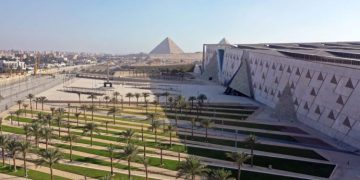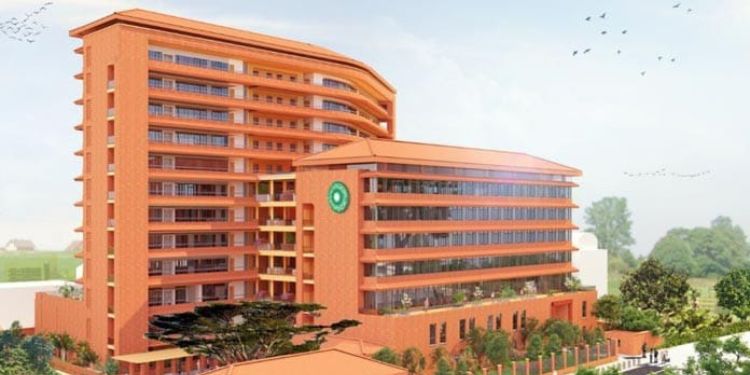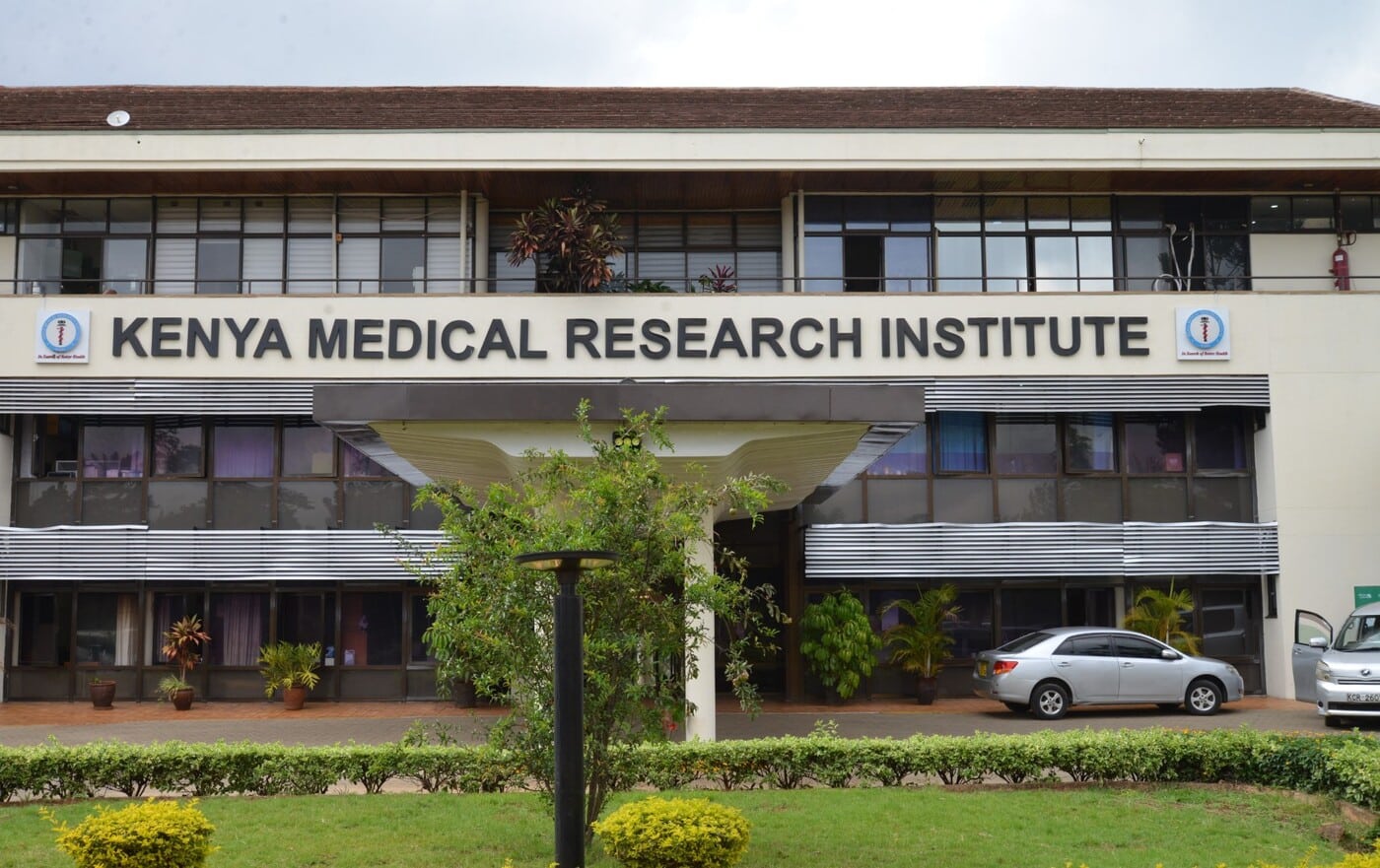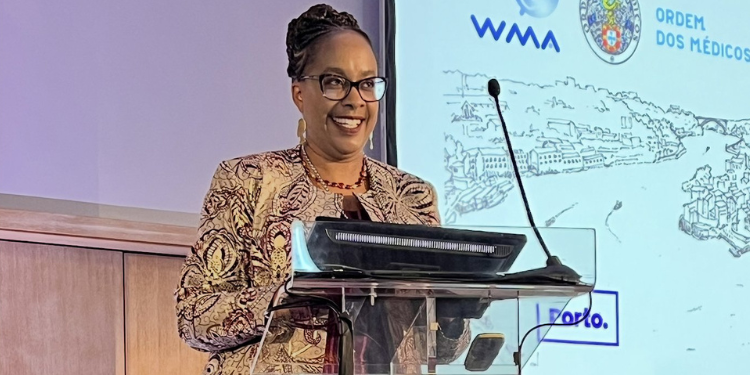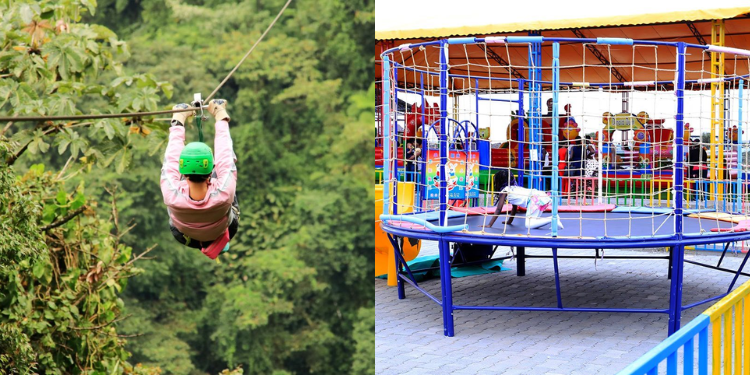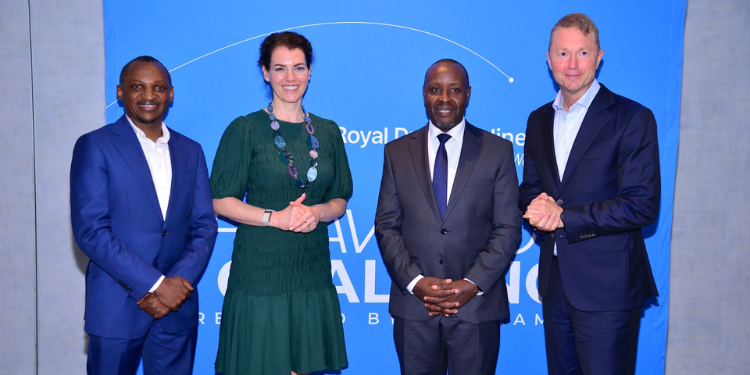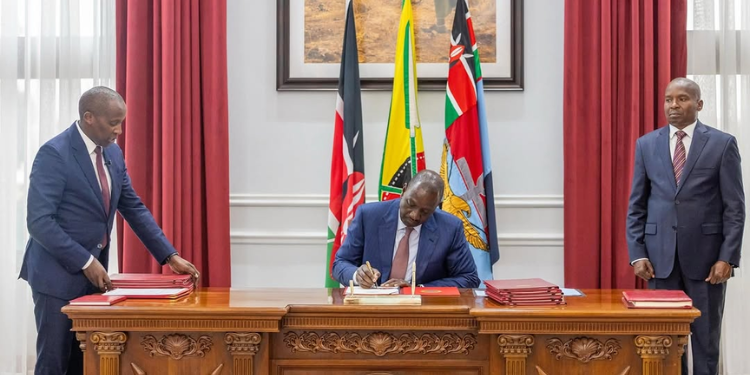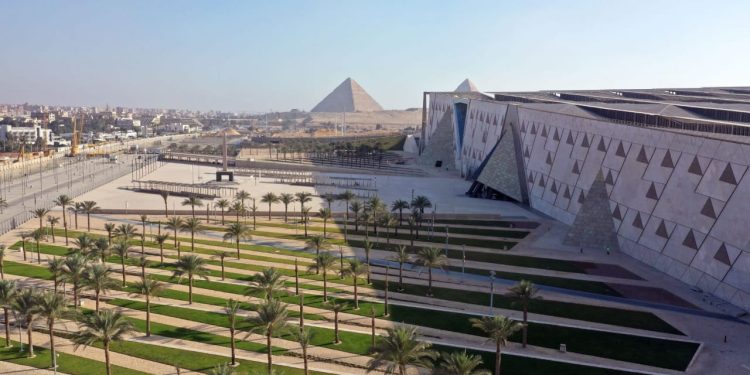The Grand Egyptian Museum is the world’s largest archaeological museum dedicated to a single civilization: Ancient Egypt.
The symbolic value of the museum lies in showcasing the continuity of Egypt’s heritage, with its physical proximity to the Giza Pyramids creating a powerful bridge between ancient and modern Egypt.
The building of the GEM was first announced in 1992, as the Egyptian Museum located in central Cairo was overcrowded and not ideally placed to host Egypt’s vast archaeological heritage.
In 2002, an international design competition was held, resulting in the selection of Heneghan Peng Architects, an Irish firm renowned for its work in architecture, landscape, and urban design. Heneghan’s design now forms the basis of the Grand Egyptian Museum.
Exterior and interior views of the Grand Egyptian Museum
In 2005, major construction on the museum began and was substantially completed in February 2023. The museum covers approximately 490,000 m² (around half a million square meters).
The newly selected site in Giza lies just 2 kilometers from the Giza Pyramid Complex, positioning itself to benefit from close proximity to one of the world’s most iconic heritage destinations.
The Grand Egyptian Museum’s design uses a triangular pattern both on the facade and the interior design of the building; this theme is meant to reflect the shape of the pyramids.
It also features large glass walls that are positioned to allow visitors to see the Giza Plateau, where the Great Pyramids stand, creating a strong visual connection between the ancient monuments and the museum.
Also Read: Egypt Unveils Ancient ‘Secret Keeper’ Tomb, Golden Mummy
Egypt’s Ambassador to Kenya, Hatem Yousri Hosn, stated that GEM’s proximity to the Pyramids provides an unparalleled visitor experience, where the ancient and the contemporary are seamlessly combined.
He added that the museum integrates education, world-class exhibition design, tourism, and conservation laboratory facilities under one roof.
“The Grand Egyptian Museum is a new chapter in how Egypt presents its ancient heritage to the world, combining cutting-edge museum practice with 5,000 years of civilization,” said Mr. Hatem Yousri Hosni, Egypt’s Ambassador to Kenya.
A soft opening of several galleries took place in October 2024, but the official opening of the GEM is scheduled for November 1, 2025.
It is set to showcase a vast collection of over 100,000 artifacts, tracing Egypt’s cultural legacy from Egypt’s Prehistoric period to the Coptic era.
The museum’s key attraction is the complete collection of Tutankhamun’s treasures, a total of 5,398 pieces, which will be displayed together for the first time in history.
Cairo’s GEM has all the makings of a must-see destination. Among other standout exhibits are a colossal 3,200-year-old statue of Ramses II, prominently displayed in the Grand Hall; the royal solar boat of King Khufu; and a rare collection of artifacts belonging to ancient Egyptian Kings and Queens from the Ptolemaic era.
“From illuminated galleries to the grand statue of Ramses II and the treasures of Tutankhamun, the museum is designed to inspire, inform, and connect people across time and geography,” Hosni stated.
The colossal statue of Ramesses II stands tall inside the modern Grand Egyptian Museum.
The museum’s exhibition blends both thematic and chronological approaches, with major galleries covering Society, Religion, Kingship, and Daily Life across different historical periods.
The museum’s design prioritizes accessibility, featuring wide atriums, ramps, inclusive layouts, tactile models, and clearly marked visitor routes to ensure a welcoming experience.
Also Read: Egypt Dusts off Pyramids for Fashion, Pop, and Art Shows
“Accessibility is central: we have ensured that all visitors, children, people with disabilities, and international tourists’ families are welcomed and catered for,” said the ambassador.
In addition to its incredible artifacts, the GEM also includes a children’s museum, conference and educational facilities, landscaped outdoor spaces, cafés, and comprehensive visitor services.
“This is not just a museum, it is a conservation, research, and education center, and a global cultural landmark,” said Hosni, underscoring the museum’s broader role in cultural diplomacy and heritage preservation.
The museum brings together Egypt’s archaeological heritage under one roof, creating a state-of-the-art facility for the preservation, interpretation, and study of the cultural material of Egypt’s ancient civilization.
The GEM positions Egypt as a cultural hub that attracts global visitors, scholars, and cultural partnerships. It is expected to attract millions of visitors, boosting Egypt’s tourism sector and strengthening connections to the Giza Plateau, surrounding hotels, and infrastructure, including the new Sphinx Airport.
“We are inviting the people of Kenya and East Africa to join us in this journey of discovery: to visit, learn, exchange culture, and strengthen ties between our nations,” said Ambassador Hosni.
Given the museum’s size and extensive collections, visitors are advised to set aside at least three to four hours, or more, to fully experience it.
Follow our WhatsApp Channel and X Account for real-time news updates.
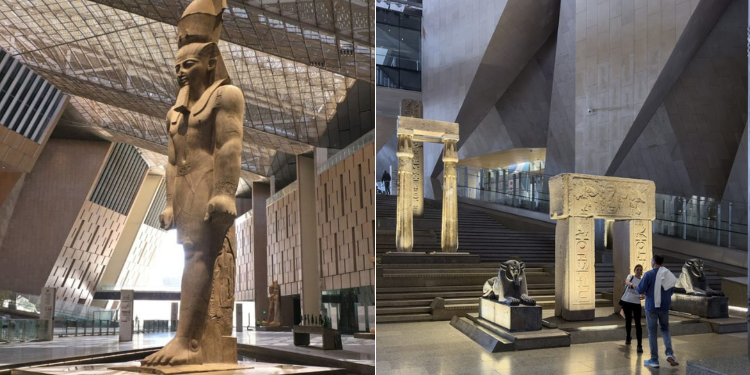
Photo- Egyptian Embassy in Kenya



